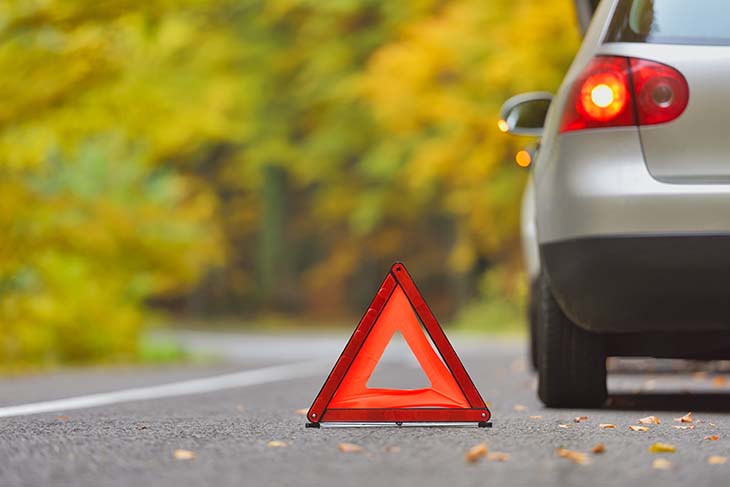Thinking of taking a road trip abroad? Whether it’s by ferry or Eurostar, it’s never been easier to get into your car and head across to mainland Europe. But the thought of driving in a foreign country can give you pause.
There’s no need to worry. The only major difference in most European countries is the side of the road you’re driving on.
As long as you have some awareness of the different driving regulations, the equipment you need, and make sure your car has been set-up correctly, then you can drive on the mainland with nothing to worry about.
Here are our tips for driving in Europe.
Do Your Research

If you know you’re going to be driving abroad, you should do some initial research before you set off.
Take a look at the UK Government’s advice for travelling to foreign countries, and pay particular attention to their advice for driving.
This website is always useful when you’re travelling abroad, as they can make you aware of local customs and regulations that might differ to the UK.
They can also alert you of potential crimes and scams that previous UK travellers have encountered in the past. You can also pick up some of the more unusual rules, such as how offensive the Greeks consider “mooning” to be, and it being prohibited by law.
Check The Rules and Regulations

Don’t just rely on the UK government though. Countries across Europe will have websites providing travel advice for visitors to their country, including those driving by car.
Whether you’re heading there for business or pleasure, familiarise yourself with what the visiting nation’s government has to say about driving in their country.
These guidelines are not designed to scare you off, but instead to give you some pointers to make driving in their country as smooth as possible.
As long as you keep an eye on these regulations and rules, you will have a smooth trip. But ignore them at their peril, as you may end up making a costly mistake.
For example, if you’re caught speeding in Switzerland, there is no fixed penalty fine. The fee you will be charged will be means tested, so based on how much you are earning.
So you can end up paying a lot more for driving illegally than you would in the UK.
But you shouldn’t be speeding anyway, so there’s nothing to worry about right?
Set Up Your Car For The Trip

When you head to Europe, your car will be one of the few cars on the road that is right hand drive. You may not notice it at home, but when your car is abroad, you might see that your car has been set up differently to others on the road.
The biggest difference will be the headlights. The angle of the beam is different in Europe, as you’re driving on the opposite side of the road. But this can mean your headlights end up shining directly into the eyes of our friends in Europe.
In many European countries, you’ll need to adjust your headlights so that this doesn’t happen. Some cars have the ability to adjust the headlights from the dashboard, others will need to be adjusted manually on the headlights themselves.
Other adjustments may need to be made to your car in advance. Again, check the rules of the road in the country you’re visiting.
Pack The Equipment You Need

While the amount of equipment you legally need to have with you in the UK is small, when travelling abroad, you often need to take a lot more. Let’s take France as an example.
First of all, you’ll need to take a red hazard warning triangle. This is so that, if you have an accident, you can set this up on the road to warn oncoming drivers.
Another item you’ll need to take with you is a breathalyser. While the fine for not carrying one is relatively small, just €11 euros, the French police might not look to kindly on you if you aren’t carrying one. The breathalyser will have to meet the French standards, and most single-use devices only have a year’s lifetime. You can pick these up at French service stations or at automotive retailers here in the UK.
Make Sure You Have a GPS

One thing that can get you easily frazzled on any journey is getting lost. But in a foreign country, where you might not speak the local language, the stress levels can rise even quicker. Make sure you have a GPS system that is properly updated to the local region. Your phone should work, providing you have a decent signal in the country you visit.
If you are using a standalone GPS, make sure it has the correct maps for where you’re travelling to, and update it before you drive.
Hire a Car if You are Unsure

If you’re driving abroad for the first time and don’t think your car is properly equipped or up-to-scratch, then you might want to hire a car to give you that added peace of mind. The car will be properly set up for the roads you’re driving on, and will have all the equipment you need to ensure that if there is an accident or you are stopped by the police, your car has all that it needs to.
Sitting in the opposite side when you drive can feel strange at first. But you’ll be surprised how quickly you pick things up.
The pedals are the same, it’s just the position of the gearstick and handbrake that are different.
Driving in Europe Needn’t Be a Headache
A little preparation is all that’s required, and then you’ll be confident driving across Europe. Get your car right, get the correct equipment, and learn the local rules and regulations. Then you can enjoy the sights and roads of Europe without any trouble.
Is It Time To Change Your Vehicle?
If you're looking to take your car on a road trip across Europe, you'll want to be sure your car can handle the journey. After all, the last thing you want is to be stuck in a foreign country with a broken down vehicle.
To avoid the worry, why not upgrade your vehicle with something newer? With finance packages starting from just £97 per month, we have options to suit all budgets. Simply apply online today to speak to one of our dedicated customer advisors.





 Facebook
Facebook Twitter
Twitter Instagram
Instagram LinkedIn
LinkedIn Youtube
Youtube